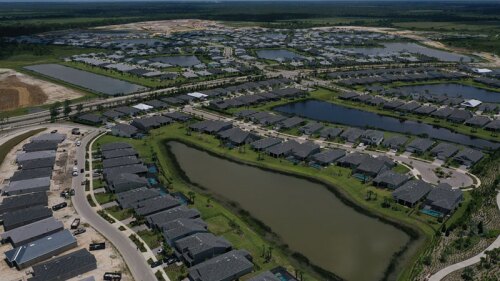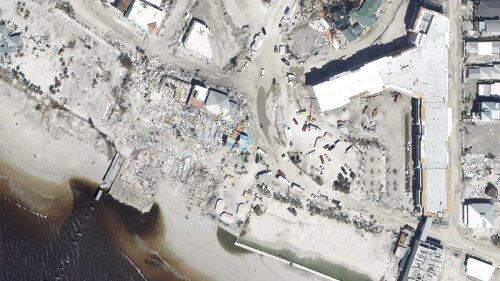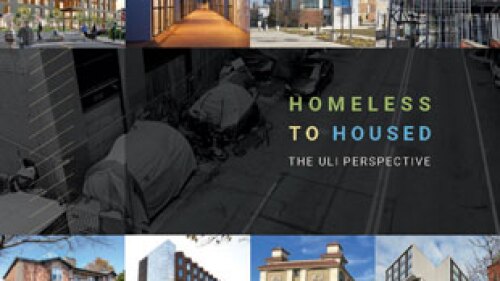A new report from ULI and Heitman, a global real estate investment management firm, points to the pressing need for greater understanding throughout the industry of the investment risks posed by the impacts of climate change. It also highlights proactive measures taken by Heitman and other leading firms to stay at the forefront of mitigation strategies and accurately price risk into investment decisions.
Climate Risk and Real Estate Investment Decision-Making explores current methods for assessing and mitigating climate risk in real estate, including physical risks such as catastrophes and transitional risks such as regulatory changes, availability of resources, and attractiveness of locations. Both types of risks have financial impacts for real estate, including higher operational costs and declining property values. The report, released today at ULI’s Europe Conference in London, is based on insights from more than 25 investors and investment managers in Europe, North America, and the Asia Pacific region, as well as existing research.
“Understanding and mitigating climate risk is a complex and evolving challenge for real estate investors,” said ULI Global Chief Executive Officer W. Edward Walter. “Risks such as sea-level rise and heat stress will increasingly highlight the vulnerability not only of individual assets and locations, but of entire metropolitan areas. This report shows that Heitman and other leading ULI members are prioritizing this issue with provocative approaches to better gauge and develop mitigation strategies. Building for resilience, on a portfolio, property, and citywide basis, is paramount to staying competitive. Factoring in climate risk is becoming the new normal for our industry.”
“Opportunities are emerging across the real estate industry for investment managers and investors to better assess climate risk and navigate the potential impacts of climate change on assets and portfolios,” said Maury Tognarelli, Heitman chief executive officer. “More accurate, forward-looking data on the risks associated with climate change are becoming available, positioning the industry to incorporate climate risks into how investments are underwritten and portfolios constructed. Ultimately, we hope this report will spur discussion among real estate industry participants with the end goal of improving the investment outcomes for our clients and constituents.”
The real estate industry as a whole has just begun the development of more advanced strategies to recognize, understand, and manage risks, and for most part relies on insurance to cover the majority of the shorter-term, financial-oriented risks related to climate change, the report states. However, while insurance has remained generally attainable in risk-prone areas, being insured does not protect investors from a reduction in asset liquidity. That, along with the likelihood of future changes in insurance availability and costs, is prompting a growing number of investors and investment managers to explore new ways to build climate risks into their investment processes, including the following:
- Mapping physical risk for current portfolios and potential acquisitions;
- Incorporating climate risk into due diligence and other investment decision-making processes;
- Incorporating additional physical adaptation and mitigation measures for assets at risk;
- Exploring a variety of strategies to mitigate risk, including portfolio diversification and investing directly in the mitigation measures for specific assets; and
- Engaging with policymakers on local resilience strategies.
Whether or not their assets have already been directly affected by the impacts of climate change, “investors see climate considerations as a necessary layer of fiduciary responsibility to their stakeholders, as well as an opportunity to identify markets and assets that will benefit from a changing climate,” notes the report. While early adapters have committed resources to gain knowledge and improve awareness of climate risk, methods in the coming years are likely to become more sophisticated, it adds.
“The industry needs to be able to better measure the value impact so it can base its future decision-making on a quantitative rather than qualitative understanding of the risks and the potential return on investment from investing in mitigation strategies for their assets.”
While awareness of climate risk is growing, none of the report’s interviewees has yet ruled out attractive investment markets solely because of that risk, the report says. Still, interviewees emphasized the need to invest in a “sensible and smart” way in markets where physical risks from climate change are evident.
Climate Risk shows that leading investment managers and institutional investors are at various points in the undertaking of resilience scans of their portfolios. These scans help identify vulnerabilities and impacts resulting from sea-level rise, flooding, heavy rainfall, water stress, extreme heat, wildfires, and hurricanes. This includes short-term considerations such as business disruption for building tenants as well as higher operating and capital costs caused by increased wear-and-tear on properties.
The report highlights Heitman’s use of emerging technology that combines next-generation climate maps with real estate data to manage climate risk. Providers of this technology use scientific climate models that project long-term, global climate change impacts and clarify the degree of exposure to both extreme weather events and chronic industry-disrupting fluctuations, such as rising seas. The report also shows how Heitman integrated the analysis into its investment decision-making, noting that the company also considers if and how an asset and the community in which it is located have already begun to mitigate climate risks. “The climate risk assessment contributes to a holistic approach (by Heitman) to constructing global property portfolios,” says the report. “If a portfolio is determined to have a higher-than-targeted exposure, it can be rebalanced over time through limiting new acquisitions or exiting existing assets exposed to a certain risk.”
As a whole, the industry needs to understand the pricing impacts of physical climate risks, and how climate change is likely to have a bigger impact on valuation in the future as asset liquidity and market liquidity are affected, the report says. It identifies several steps to raise awareness, such as:
- Improve analyses of climate risk in annual and quarterly reports. This helps create awareness among investment managers and investors and helps drive change.
- Use big data to better understand patterns around changes in asset liquidity and value, and weather forecasting.
- Work with the insurance industry to understand data and gain knowledge on how climate change is affecting premiums and coverage.
- Engage with municipal leaders in vulnerable areas to support city-level commitment to and implementation of physical and transitional risk mitigation strategies.
“An eventual downward repricing of higher-risk assets will be the market’s way of redirecting capital to locations and individual assets where it is expected to be better insulated from these particular risks. This process will be painful for investors who are caught off guard, but those who are prepared have the potential to outperform,” the report concludes.
Climate Risk and Real Estate Investment Decision-Making was prepared through a collaborative effort among Heitman, ULI Europe, and ULI’s Center for Sustainability and Economic Performance. The center provides leadership and support to real estate and land use professionals to invest in energy-efficient, healthy, resilient, and sustainable buildings and communities.





